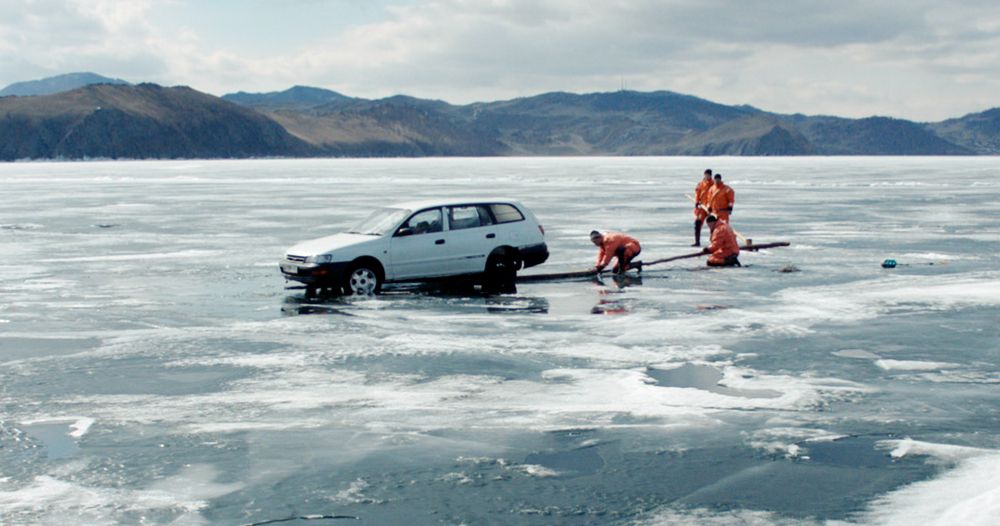Aquarela's singular focus is the unrelenting power of water. Filmed at a mesmerizing 96 frames per second, Aquarela spans the globe showing the effects of climate change to life's primary element. Russian director Victor Kossakovsky takes you on a stark and visceral journey. His documentary has zero narration, mere crumbs of dialogue, and no cohesive plot structure. It can be hypnotic and terrifying at times, but also noisy and overly abstract in long stretches. Aquarela is certainly a unique cinema experience.
The film begins with striking imagery of glaciers crumbling into the sea. The high frame rate allows for ultra crisp slow motion shots. Sheets of ice smash into each other and the water with thundering booms. The visuals are accompanied by exquisitely detailed sound. Suddenly the scene changes to the ice road along Lake Baikal. Emergency personnel struggle to pull a car out of the water. They scream at another driver who has foolishly ignored warnings of the thin ice. A heavy price is paid for this folly.
Aquarela then shifts its viewpoint to massive ocean waves. The gargantuan tides rock to a ferocious heavy metal soundtrack. The pounding surf and rapid fire kick drum pummels your senses. It's chaos and cacophony as the screen convulsives. The onslaught ends with a calm respite on the other side of the world. Aquarela transports you to the Angel Falls in Venezuela. The towering mists billow into a faint rainbow. The sway between idyllic and violent continues. From a street ride through Hurricane Irma to the shimmering shadows of light passing through ice flows, Aquarela's only character makes its presence constantly felt.
Victor Kossakovsky's camera work, cinematography, and sound mixing deserve recognition. Aquarela's immersive filmmaking techniques succeed in making the audience a part of the action. You feel the glaciers groan, shudder, and then crack into mini tsunamis. My stomach roiled as a desperate deckhand struggles to steer her lurching ship through savage waves. If only the film had spread the wealth evenly.
Aquarela is too disjointed in its approach. The scenes that grip are bunched together. Excitement builds, rewards, and then wanes considerably over significant periods. Kossakovsky loses interest in these quiet lulls. Four audience members walked out of the film halfway through. Aquarela isn't long, just ninety-minutes; but drags when you're staring at water flow. Kossakovsky would have benefited from the ten pages and a bang method. Take the spicy bits and sprinkle at weak points during the runtime. A background narrative could have built around the car accidents on Lake Baikal. The ice thawing earlier each year reinforces the climate change theme, and adds needed structure to the film.
Aquarela will be shown at 48 frames per second in high-end movie theaters. The film must be seen in a state of the art theater to truly appreciate the experience. The sound and visuals are stunning, worth the price of admission over narrative issues. Aquarela may be uncomfortable to some audiences, but film is meant to test boundaries and challenge conceptions. Aquarela is currently in limited release. It will be rolled out to new markets over several weeks. Aquarela is produced by Participant Media and distributed by Sony Pictures Classics.

